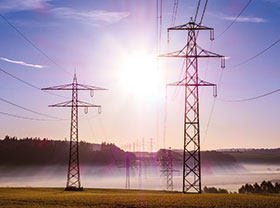

The pressure to improve energy efficiency is constant and intense, particularly for electric utilities, since changes to power production and distribution can have a cascading effect that influences the energy efficiency efforts of both utilities and consumers. In this quest for improvement, it is easy to lose sight of why you should want more energy-efficient operations.
The opportunity to cut costs is always a motivator for change, and for utilities the rewards for reducing network losses are immense, as annual electricity transmission and distribution (T&D) losses are substantial. At the end of the 2016/17 fiscal year, Eskom reported an average of 8,85% in total energy losses with a significant deterioration in distribution losses from 6,43% in March 2016 to 7,55% in 2017.
Eskom, which supplies about 95% of South Africa’s electrical energy, is planning on reducing these losses by implementing an early warning system, with regular and targeted meter audits through automated analysis on their networks.
Advanced distribution management systems (ADMS) is a solution that can be implemented to estimate and minimise losses, manage peak demand, and automated fault location, isolation, and service restoration. “Reducing electricity network losses requires smart strategies that improve active and passive energy efficiency,” says Taru Madangombe, Schneider Electric’s Energy BU vice president for southern Africa. “By planning, measuring and improving transmission and distribution network efficiency and installing digital technology that is more accurate and connected, electric utilities take a big step towards increasing energy efficiency and reliability whilst reducing operating costs.”
ADMS is Schneider Electric’s EcoStruxure solution that provides electric utilities with leading critical grid management capabilities to improve outage response, optimise evolving grid operation and manage distributed energy resources (DER) impacts. It simulates the impact on the reliability of supply, losses and voltage management with the use of algorithms that calculate optimum configurations based on data that comes from sensors, smart meters and switch operations.
DERs, which place a strain on a utility’s ability to maintain its contractually agreed upon voltage levels, are being injected into the grid and can cause the voltage to increase in one section of the network while it decreases in another.
“Traditional voltage control tools are no longer adequate for managing these demands and fluctuations, so utilities are deploying new solutions and sensors to finely tune the voltage control infrastructure to minimise technical losses and reduce costs,” continued Madangombe. “There are smart sensors, virtual sensors and remote terminal units (RTUs) to aid in this process.”
A monitoring system where the low voltage (LV) networks have three phases and a neutral wire can collect data, such as substations and feeders’ daily load, voltage and temperature profiles to provide a detailed analysis of MV/LV level performance data. This type of LV monitoring system can accommodate more DER since it addresses problems such as load imbalance and works to decrease energy loss, which can improve a substation’s output and reduce joule losses in cables.
Reducing losses is a prime concern for utilities and there are many strategies for going about this, including the addition of smart energy meters and sensors that identify the source of losses and quantify them so that network operators can start energy efficiency improvements. EcoStruxure ADMS, an industry benchmark used by over 78 utility companies that serve over 100 million end-user customers around the world, represents the evolution of control room technology by merging the distribution management system (DMS), outage management system (OMS), and supervisory control and data acquisition (scada) system into one comprehensive network management solution.
For more information contact Jason Ullbricht, Schneider Electric SA, +27 (0)11 254 6400, [email protected], www.schneider-electric.co.za
| Tel: | +27 11 254 6400 |
| Email: | [email protected] |
| www: | www.se.com/za/en/ |
| Articles: | More information and articles about Schneider Electric South Africa |

© Technews Publishing (Pty) Ltd | All Rights Reserved